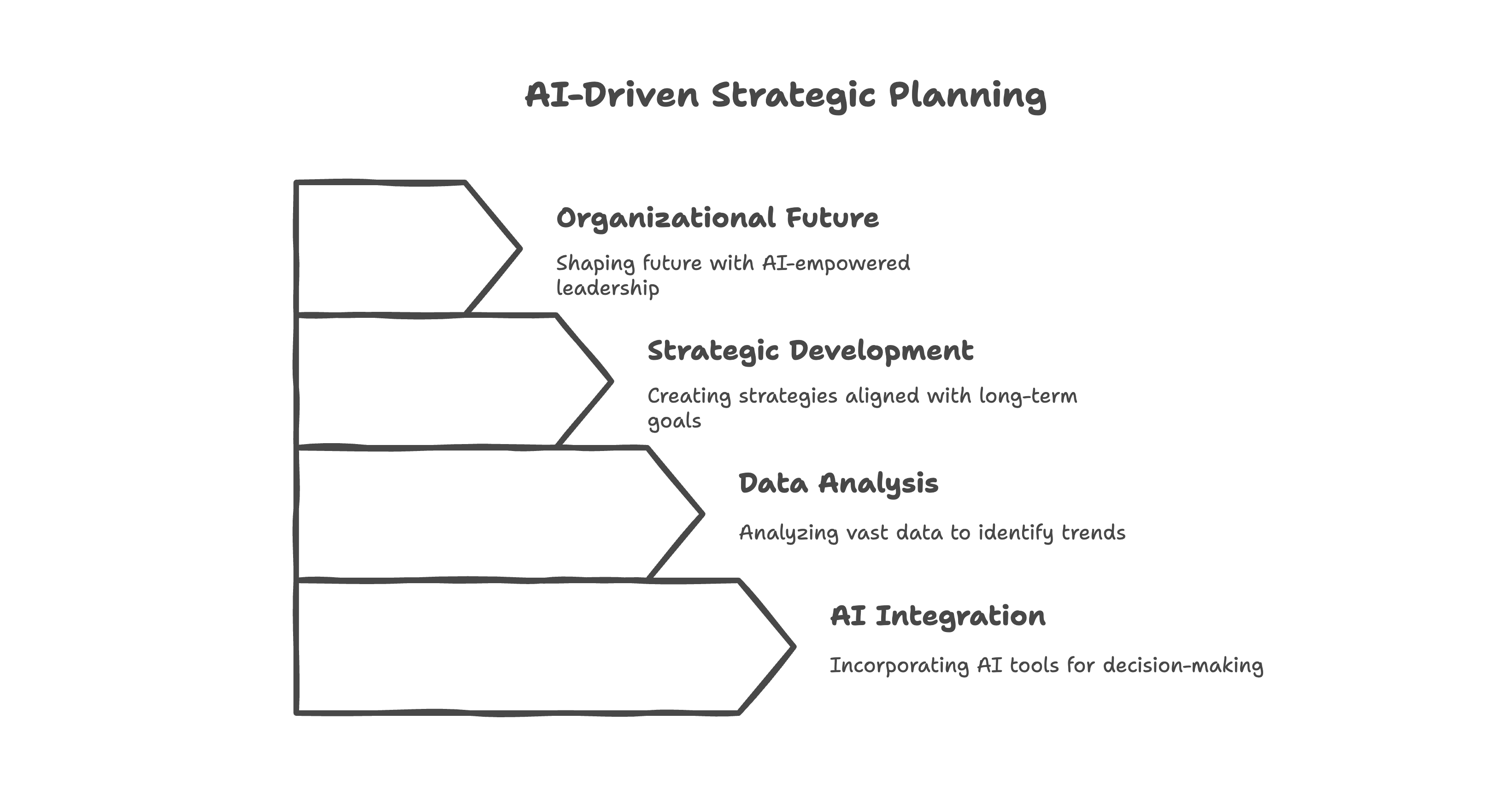Introduction
Strategic planning with AI in 2026 is no longer a once‑a‑year exercise—it’s a continuous, AI‑powered process that adapts to real‑time data, market shifts, and emerging risks. By weaving artificial intelligence into each phase of your planning cycle—from goal formulation to progress tracking—you’ll unlock deeper insights, faster decisions, and more resilient growth. In this guide, we’ll show you how to build an AI‑driven strategic planning framework optimized for success in today’s dynamic business landscape.
1. Why AI Matters for Strategic Planning in 2026
-
Agility at Scale: AI algorithms ingest thousands of data points—from customer sentiment to macroeconomic indicators—and surface actionable patterns in minutes.
-
Bias Reduction: Machine‑learning models can uncover hidden correlations and challenge assumptions, leading to more balanced decision‑making.
-
Predictive Precision: Advanced forecasting models help you anticipate market shifts, supply‑chain disruptions, and competitor moves with greater accuracy.
2. Phase 1: Data‑Driven Environmental Scanning
-
Aggregate Multi‑Source Data: Connect AI tools to your CRM, financial systems, social listening platforms, and news APIs.
-
Natural‑Language Insights: Use AI to summarize earnings calls, analyst reports, and industry blogs.
-
Sentiment Analysis: Track shifts in customer and market sentiment to flag emerging risks or opportunities.
3. Phase 2: AI‑Enhanced Goal Setting & Prioritization
-
Objective Generation: Prompt an LLM with corporate vision and market data to draft strategic objectives.
-
Impact Modeling: Use ML‑based scenario analysis to score each objective by ROI, risk, and resource intensity.
-
Prioritization Matrix: Visualize goals in a 2×2 matrix (effort vs. impact) and let AI recommend the optimal project mix.
4. Phase 3: Dynamic Roadmapping with Predictive Models
-
Timeline Forecasting: Leverage time‑series models to estimate how long initiatives will take, adjusting for resource constraints.
-
Resource Allocation: AI‑driven optimization engines can balance teams across high‑priority projects.
-
Integrated Dependencies: Map cross‑functional dependencies and use graph‑analysis algorithms to detect bottlenecks.
5. Phase 4: Automated Tracking & Real‑Time Forecasting
-
Continuous KPI Monitoring: Connect AI to dashboards that auto‑update your strategic indicators.
-
Anomaly Detection: Set up alerting for KPI deviations—AI flags when revenue dips below forecast or churn spikes.
-
Rolling Forecasts: Replace static quarterly forecasts with AI models that recalibrate weekly or monthly.
6. Phase 5: Continuous Learning & Iteration
-
Post‑Mortem Analysis: After each cycle, use AI to analyze what drove outcomes—both successes and failures.
-
Experimentation Engine: Run A/B tests at the strategic level, letting AI recommend pivots based on real‑world results.
-
Knowledge Repository: Archive decisions, rationale, and data outputs in an AI‑indexed library for future retrieval.
7. Best Practices & Tools for AI‑Powered Planning
-
Choose Transparent Models: Favor explainable AI frameworks to maintain stakeholder trust.
-
Data Hygiene First: Clean, consistent data is the foundation of reliable AI insights.
-
Cross‑Functional Collaboration: Embed AI insights into regular business rhythms—WBRs, MBRs, and QBRs.
-
Recommended Tools:
-
Brev for AI‑driven goal management and cadence automation
-
Looker Studio with ML‑powered extensions for dynamic dashboards
-
OpenAI GPT for natural‑language synthesis and summarization
-
8. Conclusion & Next Steps
Strategic planning with AI in 2026 demands an AI‑infused approach that’s continuous, data‑driven, and adaptive. By following this five‑phase framework, you’ll harness AI to elevate decision quality, speed up execution, and build a resilient roadmap for sustained growth.
👉 Ready to supercharge your 2026 strategic plan with AI?
Explore Brev’s AI‑powered planning suite and schedule a demo today.
